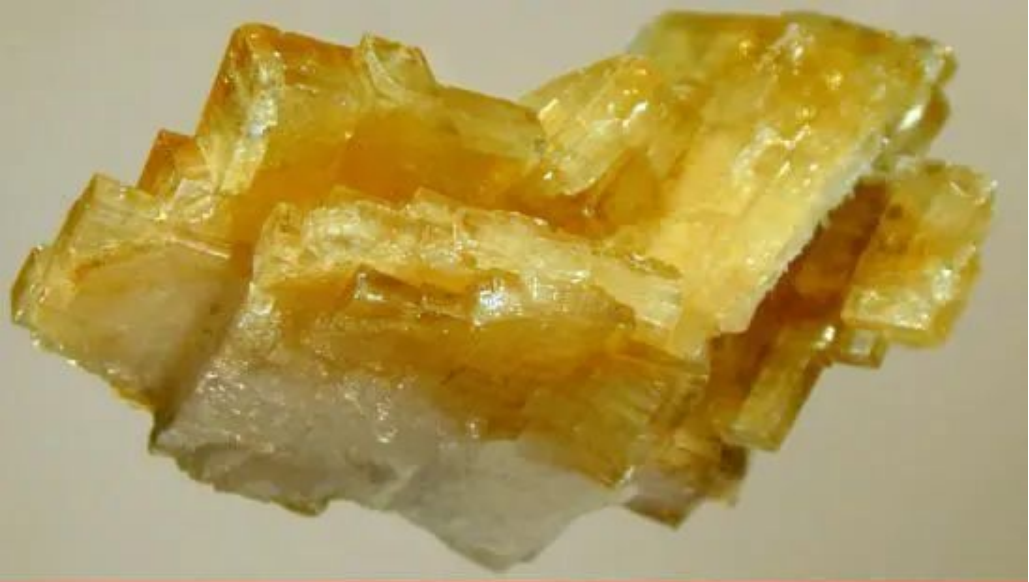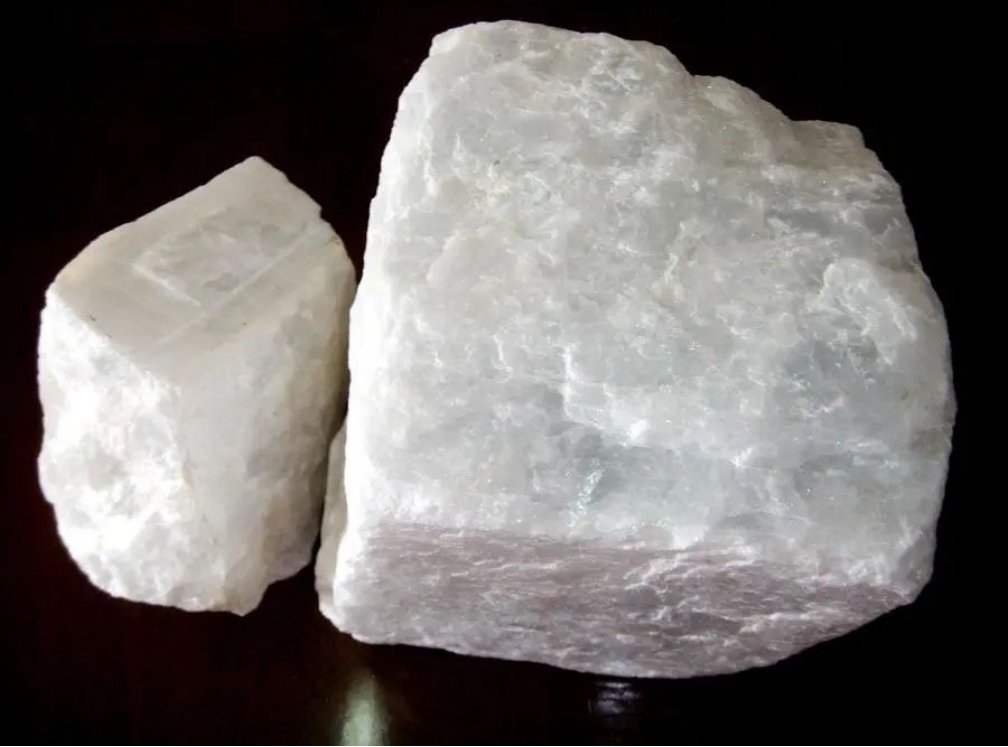Dry goods/barite
Dry goods/barite
barite
It is a non-metallic mineral product with barium sulfate (BaSO4) as the main component, which is produced in low-temperature hydrothermal veins, such as quartz-barite veins, fluorite-barite veins, etc. It is often combined with galena and sphalerite. , chalcopyrite, cinnabar and other symbiosis.
Barite is a non-renewable resource with stable chemical properties, insoluble in water and hydrochloric acid, non-magnetic and toxic.
structural properties
Barite is a non-metallic mineral product with barium sulfate (BaSO4) as the main component. Pure barite is white and shiny. Due to the influence of impurities and mixed substances, it is often gray, light red, light yellow, etc. The crystallization condition Fairly good barites can also appear as transparent crystals. Barite-sulfate minerals. The composition is BaSO4. The most widely distributed barium-containing minerals in nature. Barium can be replaced by strontium completely isomorphic to form lapis lazuli; partially replaced by lead to form Beitou stone (named after the hot spring in Beitou, Taiwan). Orthogonal (rhombic) crystal system, the crystal is often thick plate. Pure barite is transparent and colorless, generally white, light yellow, vitreous, and the cleavage surface is pearly. Complete and moderate cleavage in 3 directions, Mohs hardness 3-3.5, specific gravity 4.5. It is mainly formed under medium and low temperature hydrothermal conditions.
Barite is chemically stable, insoluble in water and hydrochloric acid, non-magnetic and toxic. The chemical composition of barite is Ba[SO4], and the crystal is a sulfate mineral of orthorhombic (rhombic) crystal system. Often thick plate or columnar crystals, mostly dense block or plate, granular aggregates. When pure, it is colorless and transparent. When it contains impurities, it is dyed into various colors, with white streaks, vitreous luster, and transparent to translucent. Three groups of cleavage are complete, and the included angle is equal to or close to 90°. Mohs hardness 3-3.5, specific gravity 4.0-4.6. Identification features: plate-like crystal, small hardness, complete cleavage at near right angles, high density, no foaming in the presence of hydrochloric acid, and distinguishes it from similar calcite. Barite is a non-metallic mineral product with barium sulfate (BaSO4) as the main component. Pure barite is white and shiny. Due to the influence of impurities and mixed substances, it is often gray, light red, light yellow, etc. The crystallization condition Fairly good barites can also appear as transparent crystals. Barite is a mixture.
Main origin
1 Guangxi
Guangxi is the largest barite production base in China. Barite production is widely distributed in more than 20 counties including Xiangzhou, Wuxuan, Sanjiang, Yongfu, Fusui and Luzhai. The annual output of barite mines in the autonomous region is more than 1 million tons, with the highest output in Xiangzhou County, reaching 450,000 tons, followed by Yongfu with an output of 140,000 tons, and Fusuisi Tong barite mine with an output of 36,000 tons. Guangxi Barite High output of quarry, high quality
Good volume, enjoys a high reputation in domestic and foreign markets, and both export and domestic sales rank first in the country. The deposit is a vein-shaped barite deposit with simple hydrogeological conditions. The surrounding rock of the ore body is silicified argillaceous siltstone with clear boundaries, stable surrounding rocks and simple mining conditions.
2 Guizhou
Guizhou is rich in barite resources, accounting for about 60% of the national barite reserves. It is the second largest barite production base in China. It is mainly distributed in Tianzhu, Majiang, Huangping, Kaili, and Shibing 5 cities. Among them, the barite mining area near the Dahe River in Tianzhu County is an extra-large deposit with a proven D-level reserve of 108.8104 million tons. The Ming D-level reserves are 16 million tons, and the proven D-level reserves in Huangping, Kaili, and Shibing counties and cities are about 10 million tons. The quality of barite ore in Guizhou is good, among which the rich ore with BaS content of more than 85% accounts for 70%, and its grade fully meets the requirements of industrial production. Guizhou ranks first in the country in terms of barite reserves, but its mining volume and export are not as good as those of Guangxi. There are more than 80 barite mines in the province. If mining is normal, the annual output of ore can reach more than 10 million tons. There are more raw ore mining and few deep-processing enterprises, only 1 million t. The annual output of 180,000 t barium carbonate project of Hebei Xinji Chemical Group was completed and put into operation in Tianzhu County, Guizhou Province on March 28, 2004, which will make Guizhou's barite output exceed Guangxi. , becoming the largest barite production base in China.
3 Hunan
The barite mining areas in Hunan Province are mainly distributed in Hengnan, Xinhuang and Liuyang. The province's barite mining industry is extremely developed, and the annual output of barite in Huaihua, Hunan reaches 800,000 t. The Tanzishan barite deposit in Hengnan, Hunan occurs in the red continental sediments of the Upper Cretaceous, and the scale of the deposit is large. The single ore body is 100-700m long, 30-135m wide, and 5-65m thick. The ore content of barite is 7.75%-20.43%. The ore grade is generally about 85%. The mines are mainly open-pit mining on slopes, and gravity and hand beneficiation are used.
4 Hubei
Hubei Province is rich in barite mineral resources, which are widely distributed in Suizhou, Songzi, Zhicheng, Wufeng Mountain and other areas. Liulin, Suizhou, Hubei is an extra-large barite deposit. The mining area includes three mining sections: Tianjiachong-Xiejiadian, Liuhewan and Jinqiaoling. The Liuhewan and Jinqiaoling ore sections are mined by the Liulin Barite Mine in Suizhou, Hubei Province, and were officially put into operation in 1978 with an annual output of about 15t/a.
5 Shaanxi
The barite mines in Shaanxi Province are mainly concentrated in Ankang area, which is adjacent to Hubei Province in the east, Sichuan Province in the south, Bashan Mountain and Hanshui River in the south, and the ancient Qinling geotrough has created a wealth of barite and pyrite-based mines. non-metallic mineral resources. There are large barite deposits in the territory. The ore belt is located in the ancient Qinling geotrough fold belt. The Proterozoic Sinian metavolcanic clastic tuff constitutes the basement structure of the mining area, and the Cambrian-Ordovician carbonaceous siliceous rock formation constitutes the upper structural layer. The period is the angle Unconformity contact, barite ore body is controlled by horizon and paleogeographical environment, mainly deposited in the lower Cambrian-Ordovician lithological section of the neritic edge under weak alkaline oxidizing medium conditions, and is a single barite ore body . The proven barite reserves are 24 million tons. The main component of the ore body is barite, followed by quartz, and a small amount of dusty carbonaceous. The ore structure is mainly dense inlaid, dense block, and layered. The structure and industrial type of ore are all barite type. The barium sulfate grade is 90% to 98%, the average grade is 94%, the highest is 99.33%, the density is above 4.2g/cm3, and the maximum is 4.5. It has large reserves, high grade, easy to use. The advantage of mining is that it is a reliable base for barite export and processing barite powder.
6 Fujian
The proven barite reserves are mainly concentrated in the Lifang mining area of Yongan City, Fujian Province. The deposit is a sedimentary deposit. This area includes four mining sections with an annual production capacity of 400,000 tons and an annual export of 200,000 tons.
The main purpose
The main uses of barite:
The circulating mud weighting agent in the rotary drilling of oil and gas wells in oil drilling cools the drill bit, takes away the cut debris, lubricates the drill pipe, closes the hole wall, controls the oil and gas pressure, prevents the oil well from blowing out, and chemically produces barium carbonate, barium chloride, Various barium compounds such as barium sulfate, zinc barium white, barium hydroxide, barium oxide, etc. These barium compounds are widely used in the refining of reagents, catalysts, sugar, textiles, fire prevention, various fireworks, coagulants for synthetic rubber, plastics, insecticides Agents, surface quenching of steel, phosphors, fluorescent lamps, welding flux, grease additives, etc. Glass deoxidizers, fining agents, fluxes increase the optical stability, luster and strength of glass, rubber, plastics, paint fillers, brighteners, weighting agents, building concrete aggregates, paving materials Buried pipes in swampy areas under pressure, replace Lead plates are used for shielding in nuclear facilities, atomic power plants, X-ray laboratories, etc., to prolong the life of pavement.








